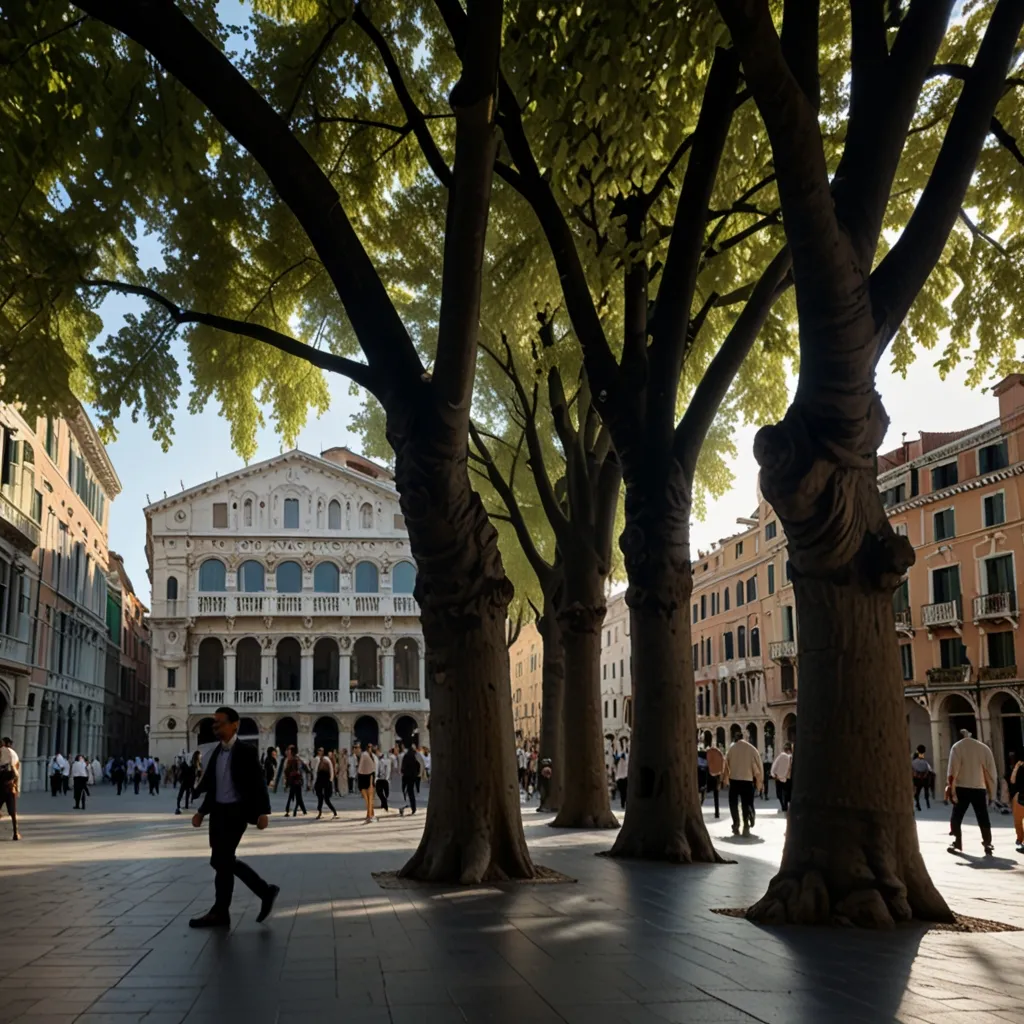The New York Stock Exchange (NYSE) and the London Stock Exchange (LSE) are giants in the world of finance, turning millions of trades and functioning like well-oiled machines. But believe it or not, these massive exchanges didn’t always operate this way. To understand their evolution, we need to jump into a time machine back to the Middle Ages, a period that laid the groundwork for today’s bustling exchanges.
Let’s rewind the clock to the 1300s in Italy. This era witnessed what many believe to be the birth of the first stock market. In Venice, lenders roamed the streets carrying slates filled with sales information, essentially acting as primitive stockbrokers. They facilitated transactions for simple items initially, but as time passed, these transactions grew more intricate.
Imagine this: Moneylender A has a risky, high-interest loan, and Moneylender B holds a safer, low-interest, long-term loan. If Lender A decided to offload his high-risk loan, brokers would step in to negotiate a swap, birthing a system of debt exchanges that added layers of complexity. These deals weren’t just about loans between lenders; soon, they evolved to include government debts, with brokers selling debt issues to individual investors for returns. This advancement thrust the Venetians into the spotlight as pioneers in trading securities from other governments.
Fast forward to 1602, and the Dutch East India Company launched a groundbreaking concept—individual corporate stocks. Regular folks could buy shares of the company, thanks to these exchanges. The idea took off, leading us to 1688, where trading one stock for another became a reality. A significant milestone here was Joseph De la Vega’s book, “Confusion of Confusions.” It gives a detailed account of the stock market dynamics in a dialogue format involving a merchant, a shareholder, and a philosopher. De la Vega’s insights into market unpredictability and the importance of patience in investments still resonate today.
Now let’s hop over to England in 1693. King William III needed money for England’s colonization efforts and wars, so he issued the first-ever government bonds. This move led to the establishment of the Bank of England and sparked the beginning of actual stock exchanges. By 1698, brokers gathered in coffee houses with regular lists of stocks and commodity prices—a practice that marked the London Stock Exchange’s inception.
Our journey through history wouldn’t be complete without stopping in 1792 in New York. The NYSE’s humble beginnings under a sycamore tree are legendary. Twenty-four brokers signed the Buttonwood Agreement, committing to trade five securities under that very tree. It’s almost poetic that today’s colossal NYSE started beneath the shaded canopy of a tree.
Let’s jet over to Asia circa 1875, to the setup of the Bombay Stock Exchange (BSE). Picture this: Five brokers gathered beneath a banyan tree in front of Mumbai Town Hall. A decade later, they relocated but stayed true to their roots—quite literally—operating under banyan trees on what is now Mahatma Gandhi Road. There’s something magical about the world’s major stock exchanges starting under trees, don’t you think?
As more countries followed suit, stock exchanges sprouted up globally, each evolving and maturing over time. Fast forward to 2023, and we see how these humble beginnings paved the way for today’s sophisticated financial institutions. It’s genuinely impressive to reflect on this evolution.
When you strip away the layers of complexity and modern tech, today’s stock exchanges are built on the same foundational principles as those early Venetian deals and coffee house transactions. The markets have become more accessible and vast, but the core idea of facilitating trade remains unchanged.
Sometimes, it’s easy to overlook how these colossal financial entities came into existence. But taking a moment to reflect on their history reveals the fascinating journey from rudimentary trade facilitation to the high-speed electronic trades we see today. Whether it’s the NYSE buzzing with activity or the world-class LSE managing myriad complex investments, these institutions remind us of humanity’s relentless drive to innovate and adapt across centuries.
The enduring legacy of those early Venetian brokers and under-the-tree traders lives on. Our high-tech, screen-dominated trading floors may seem worlds apart from their origins, but they remind us of how far we’ve come while keeping us grounded in the timeless basics. So, next time you glance at a stock ticker or hear about a market surge, think of those early brokers carving out their niche with slates in hand and deals under their favorite trees. The financial world has a rich, storied past that continues to shape its future in unexpected and remarkable ways.






